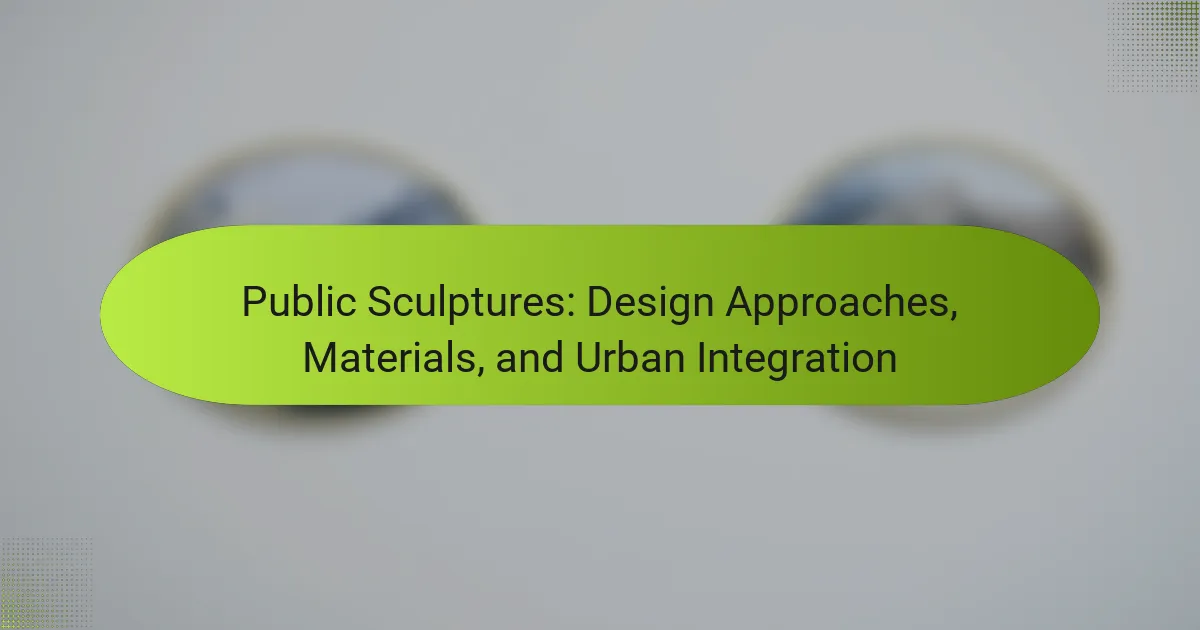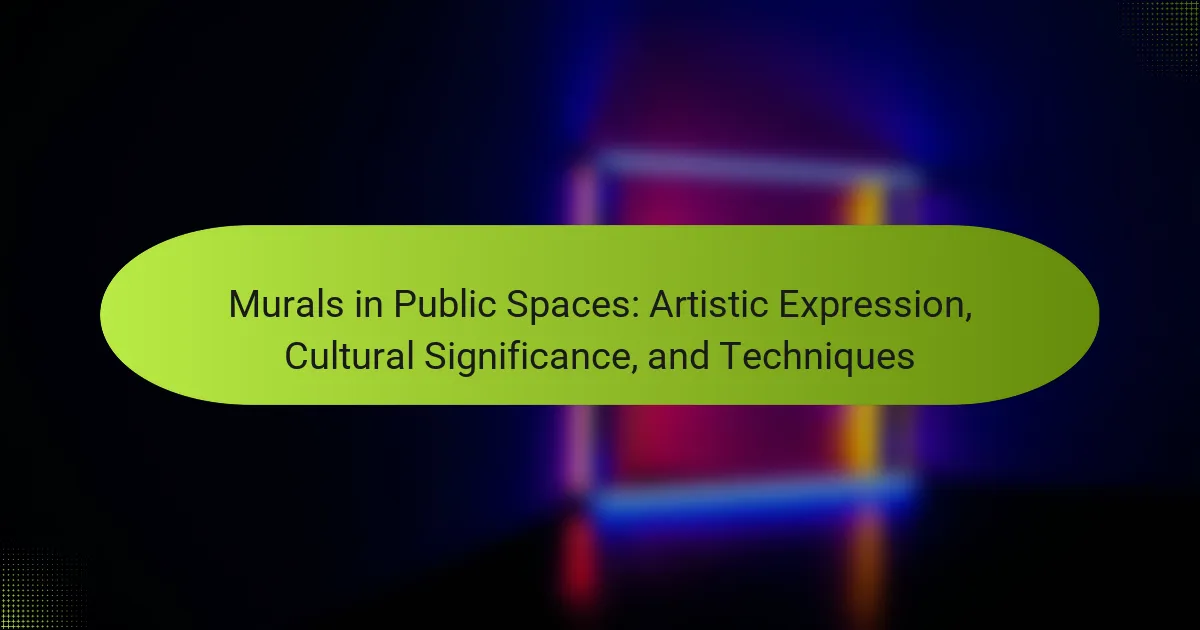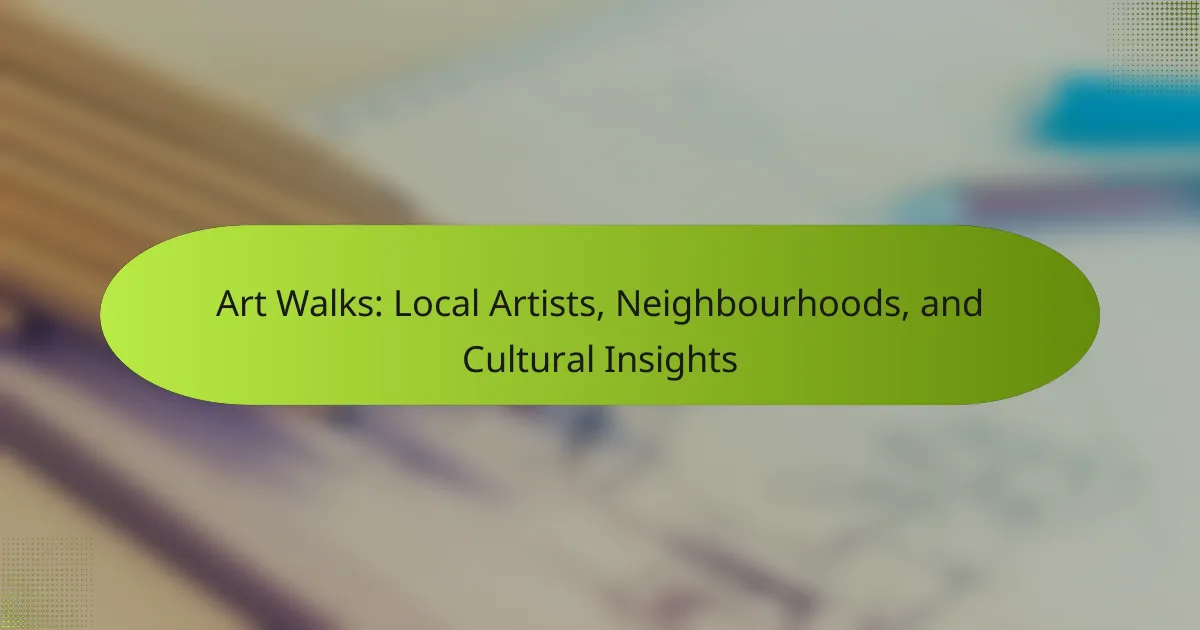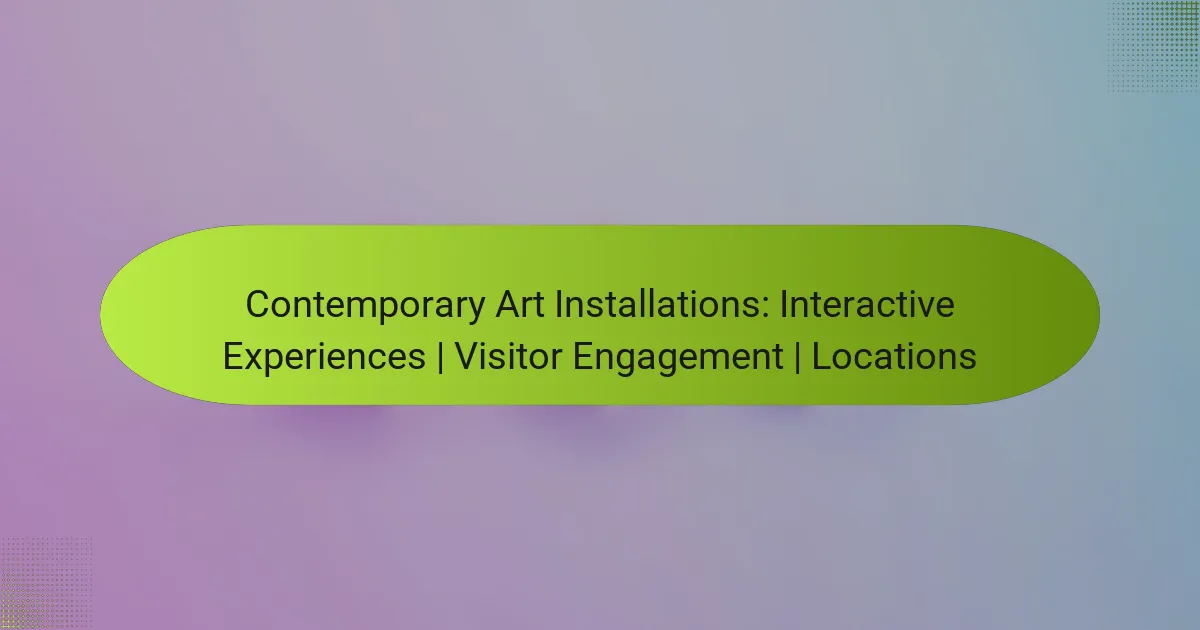Art plays a critical role in gentrification, influencing community dynamics and socioeconomic conditions. This article explores how art attracts new residents, the mixed responses from communities, and various case studies highlighting both revitalization and displacement. It examines the challenges artists face and the differing perceptions of art’s impact in urban areas. Finally, it discusses community advocacy for inclusive art programs and collaboration with policymakers.
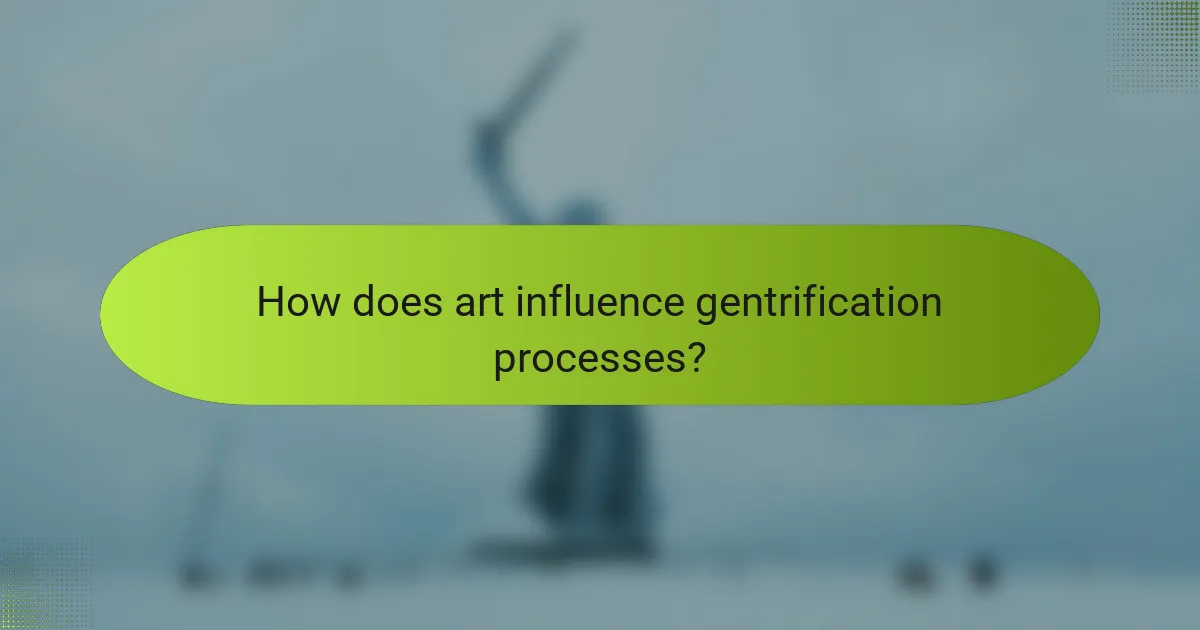
How does art influence gentrification processes?
Art significantly influences gentrification processes by attracting new residents and businesses, often displacing long-standing communities. Artistic initiatives can enhance neighbourhood appeal, leading to increased property values. This transformation can create tension between new and existing residents, resulting in community responses that range from resistance to adaptation. Case studies illustrate varied outcomes, highlighting both positive cultural revitalization and negative socioeconomic impacts.
What are the socioeconomic impacts of art on local communities?
Art positively impacts local communities by fostering economic growth, enhancing cultural identity, and promoting social cohesion. Gentrification often occurs as art initiatives attract investment, leading to increased property values. Community responses vary; some embrace the changes, while others resist displacement. Case studies show that art can both revitalize neighbourhoods and challenge existing social structures. For instance, cities like Portland and Detroit have utilized public art to stimulate local economies while addressing community concerns.
Which artists and movements are most associated with gentrification?
Artists and movements associated with gentrification include street artists, community art collectives, and urban contemporary art. Notable figures like Banksy and movements such as the Harlem Renaissance reflect socioeconomic changes and community responses. Street art often critiques gentrification, highlighting displacement and cultural loss. Urban contemporary art frequently incorporates local narratives, fostering dialogue about neighbourhood transformations.
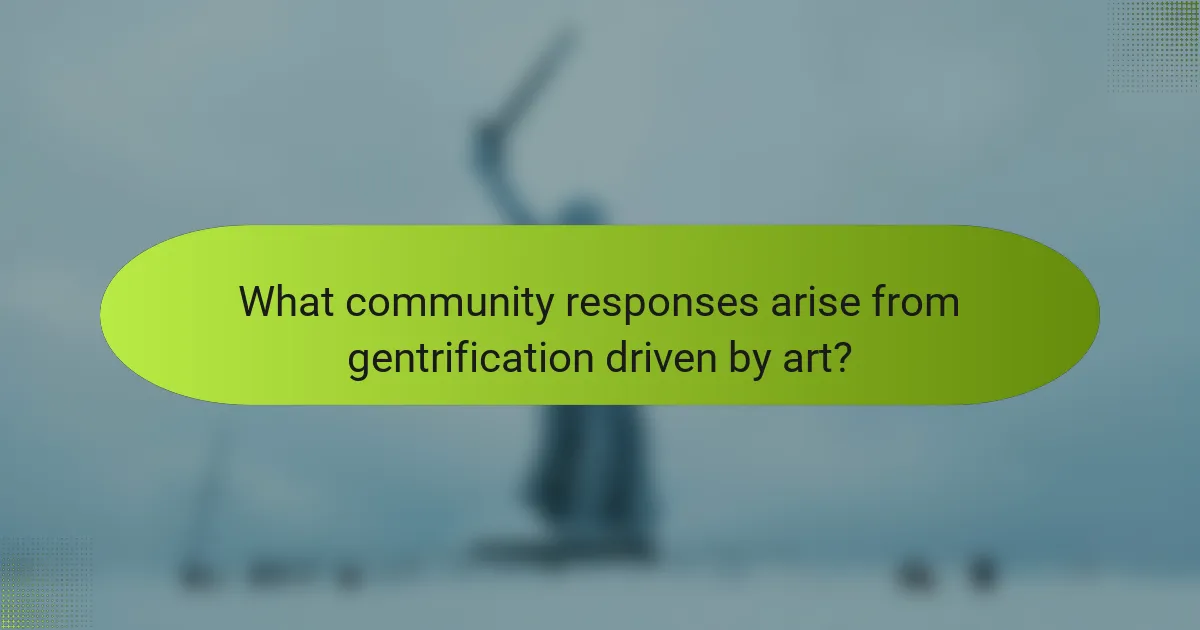
What community responses arise from gentrification driven by art?
Gentrification driven by art often leads to mixed community responses, including both revitalization and displacement. Communities may celebrate enhanced cultural vibrancy while grappling with rising costs and loss of local identity. As a result, some residents advocate for affordable housing and preservation of local art to counteract negative impacts.
How do local artists advocate for preservation of cultural identity?
Local artists advocate for the preservation of cultural identity by using their art to reflect and celebrate community heritage. They create public murals, host cultural events, and engage in storytelling to foster a sense of belonging. These initiatives often counteract the effects of gentrification, where rising property values threaten local culture. Artists collaborate with community organizations to promote awareness and encourage participation in cultural preservation efforts. By transforming public spaces, they create platforms for dialogue and connection, reinforcing the community’s unique identity amidst socioeconomic changes.
What role do community organizations play in resisting gentrification?
Community organizations play a crucial role in resisting gentrification by advocating for residents’ rights and promoting affordable housing. They mobilize local residents to voice their concerns, create awareness about the impacts of gentrification, and provide resources for community empowerment. For example, organizations often engage in grassroots campaigns to influence local policy and zoning laws that protect existing neighbourhoods. They also foster cultural identity through art initiatives, helping to maintain the community’s character amid economic pressures. By collaborating with artists and activists, these organizations can create inclusive spaces that celebrate diversity while resisting displacement.
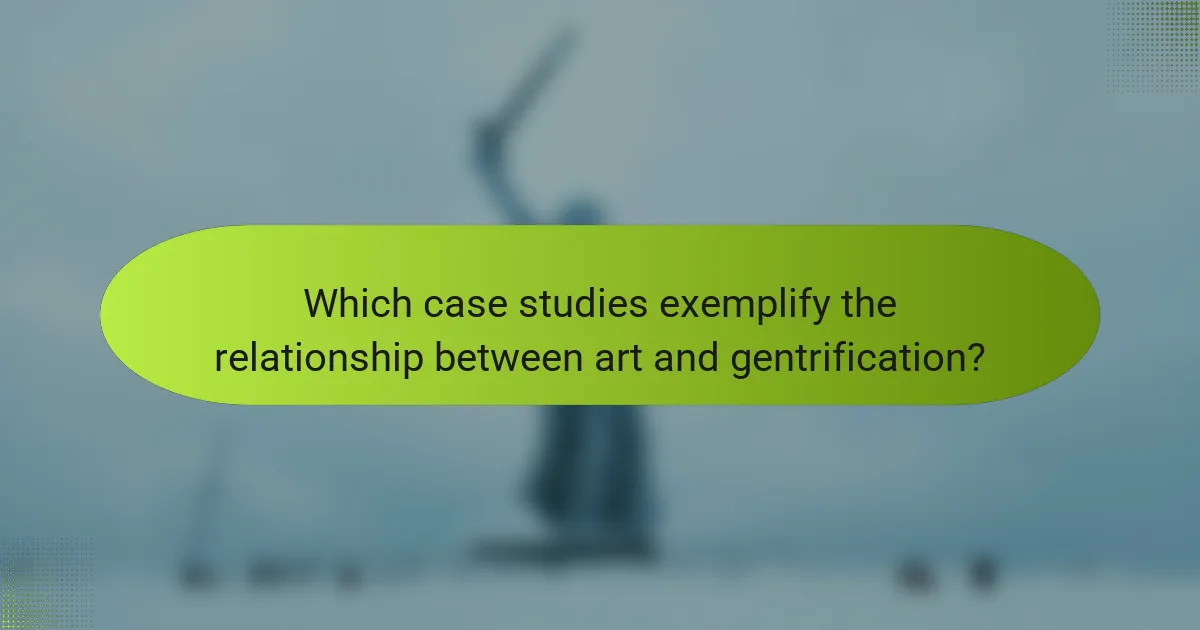
Which case studies exemplify the relationship between art and gentrification?
Several case studies illustrate the connection between art and gentrification. In San Francisco’s Mission District, murals reflect community identity but face erasure due to rising rents. In Brooklyn, New York, art installations initially attracted investment, leading to displacement of long-term residents. In Detroit, public art revitalizes neighbourhoods, yet raises concerns about cultural dilution. Each case highlights the dual role of art as both a catalyst for economic growth and a potential threat to community cohesion.
What lessons can be learned from urban art initiatives in various cities?
Urban art initiatives highlight the importance of community engagement in gentrifying neighbourhoods. They can foster cultural identity, promote social cohesion, and provide a platform for marginalized voices. Successful case studies demonstrate that art can mitigate negative impacts of gentrification by enhancing local pride and attracting tourism. For example, in cities like Berlin and Brooklyn, urban art has transformed public spaces while involving residents in the creative process. This participatory approach often leads to sustainable development and improved community relations.
How have specific neighbourhoods transformed due to art-led gentrification?
Art-led gentrification has transformed neighbourhoods by enhancing cultural vibrancy while displacing long-term residents. Art initiatives often attract new businesses and investments, leading to increased property values. For example, in neighbourhoods like Bushwick, Brooklyn, murals and galleries have drawn tourists, altering the local economic landscape. However, this transformation can result in community pushback as residents seek to maintain their cultural identity amidst rising costs.
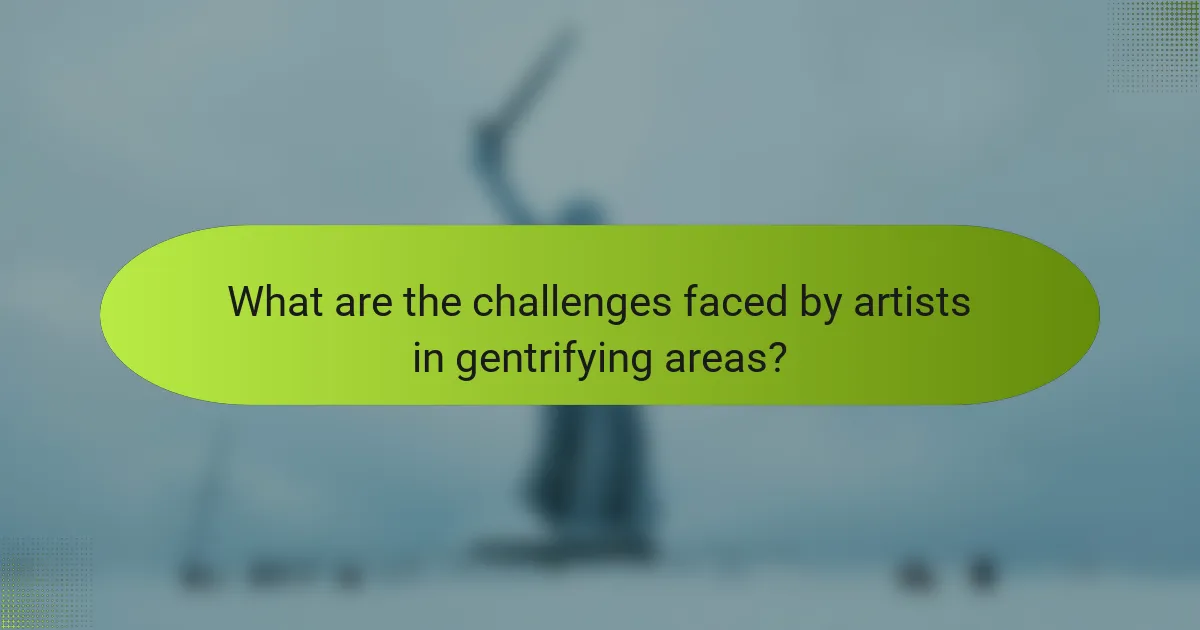
What are the challenges faced by artists in gentrifying areas?
Artists in gentrifying areas face numerous challenges, including rising living costs, displacement, and loss of community support. These factors can stifle creativity and access to resources. As neighbourhoods transform, artists often struggle to maintain their presence and connection to local culture. The influx of wealthier residents can lead to a shift in artistic priorities, favouring commercial over community-focused projects. Additionally, the pressure to adapt to new market demands can compromise artistic integrity.
How do rising costs impact artistic production and community engagement?
Rising costs significantly hinder artistic production and community engagement by limiting resources and accessibility. As gentrification progresses, artists face increased living expenses, which can lead to reduced creative output. Community engagement often diminishes as local cultural spaces close or become unaffordable, alienating residents. Additionally, funding for public art initiatives may decline, impacting collaborative projects that foster community ties.
What strategies can artists use to navigate gentrification?
Artists can navigate gentrification by fostering community engagement, advocating for affordable spaces, and collaborating with local organizations. These strategies empower artists to maintain their presence while addressing the socioeconomic changes around them. Community engagement builds support networks, while advocacy for affordable spaces helps secure locations for artistic expression. Collaborations with local organizations can amplify their voices and resources, creating a stronger collective impact against displacement.
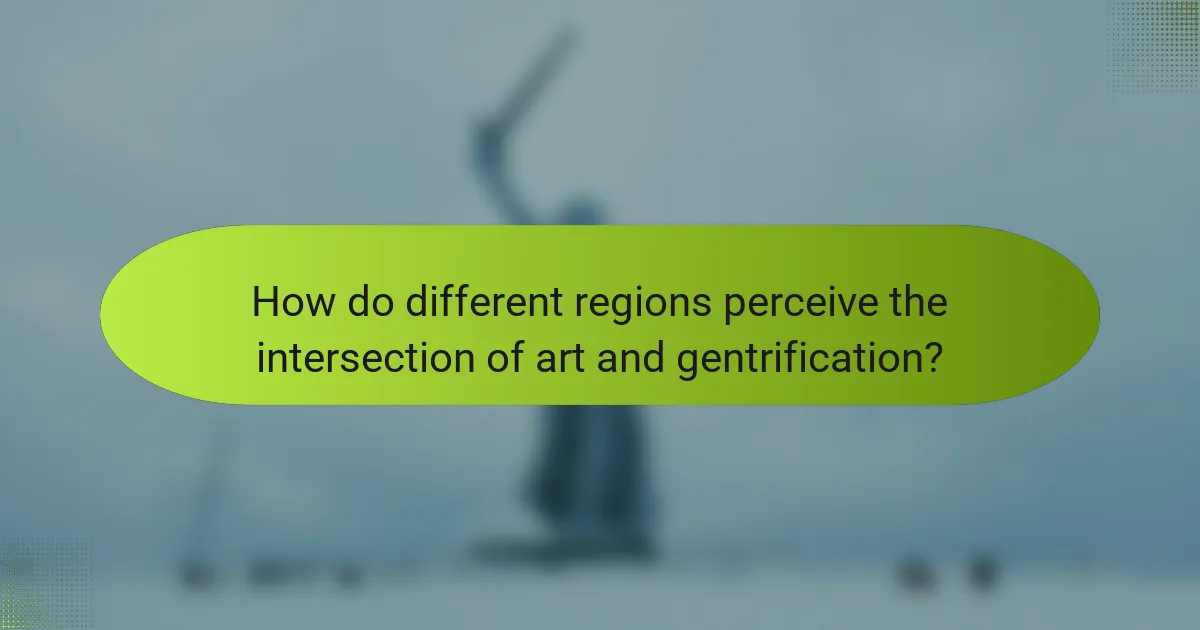
How do different regions perceive the intersection of art and gentrification?
Different regions perceive the intersection of art and gentrification in varied ways. Urban areas often view art as a catalyst for economic revitalization, while communities may see it as a threat to cultural identity.
In cities like New York, art initiatives can attract investment, leading to increased property values. However, local residents sometimes face displacement due to rising costs. Conversely, in regions like Berlin, art is often embraced as a means of preserving cultural heritage amidst gentrification pressures.
Community responses vary significantly. Some advocate for inclusive art programs that engage local voices, while others resist changes that threaten their neighbourhoods. Case studies reveal that successful integration of art in gentrifying areas often hinges on collaboration between artists, residents, and policymakers.
What cultural differences influence community responses to gentrification?
Cultural differences significantly shape community responses to gentrification. Factors such as socioeconomic status, historical context, and racial dynamics influence how communities perceive and react to changes.
For example, communities with strong historical ties to their neighbourhoods may resist gentrification more fiercely than those with transient populations. Additionally, cultural narratives around displacement and belonging can affect collective action.
Art plays a crucial role in these responses, often serving as a medium for expressing resistance or adaptation. In areas where art is integral to community identity, gentrification can provoke strong backlash.
Ultimately, understanding these cultural dimensions is essential for addressing the complexities of gentrification and fostering inclusive community development.
Which policies have been effective in supporting artists in gentrified neighbourhoods?
Policies that support artists in gentrified neighbourhoods include affordable housing initiatives, grants for local art projects, and community engagement programs. These measures aim to preserve cultural identity and provide financial stability for artists. For example, programs that offer subsidized studio space help maintain artistic presence in rapidly changing areas. Additionally, collaborations between local governments and art organizations foster community resilience against displacement.
What are the implications of gentrification on local art markets?
Gentrification significantly impacts local art markets by altering cultural landscapes and economic dynamics. As neighbourhoods undergo gentrification, rising property values often displace long-standing artists and galleries. This shift can lead to a homogenization of artistic expression, favouring commercial over community-focused art.
The influx of wealthier residents may initially stimulate local art markets by increasing demand for art and cultural experiences. However, this can create barriers for emerging artists who struggle to afford studio space or gallery representation. Consequently, community responses often involve grassroots initiatives aimed at preserving local art scenes.
Case studies show varied outcomes. In some cities, artist collectives form to resist gentrification’s negative effects, fostering collaboration and cultural resilience. In others, art becomes a tool for gentrification, with new developments branding neighbourhoods as cultural hubs while displacing original residents.
What best practices can communities adopt to balance art and gentrification?
Communities can adopt several best practices to balance art and gentrification. First, they should encourage local artists to participate in public art projects, ensuring that the cultural identity remains intact. Second, implementing policies that protect affordable housing can mitigate displacement. Third, fostering partnerships between artists and local businesses can create economic opportunities while enhancing community engagement. Lastly, organizing inclusive community events that celebrate local art can promote dialogue and understanding among diverse residents.
